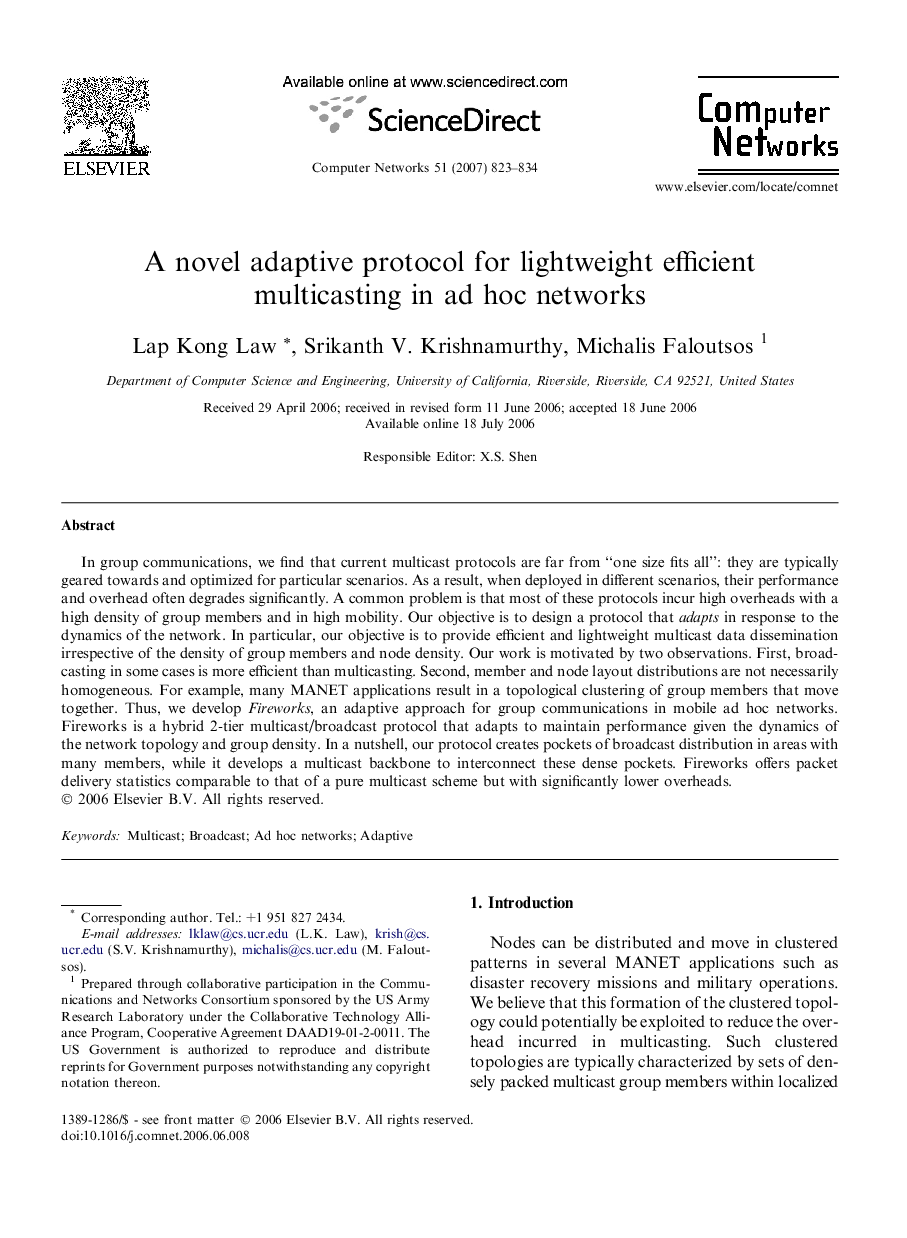| Article ID | Journal | Published Year | Pages | File Type |
|---|---|---|---|---|
| 453306 | Computer Networks | 2007 | 12 Pages |
In group communications, we find that current multicast protocols are far from “one size fits all”: they are typically geared towards and optimized for particular scenarios. As a result, when deployed in different scenarios, their performance and overhead often degrades significantly. A common problem is that most of these protocols incur high overheads with a high density of group members and in high mobility. Our objective is to design a protocol that adapts in response to the dynamics of the network. In particular, our objective is to provide efficient and lightweight multicast data dissemination irrespective of the density of group members and node density. Our work is motivated by two observations. First, broadcasting in some cases is more efficient than multicasting. Second, member and node layout distributions are not necessarily homogeneous. For example, many MANET applications result in a topological clustering of group members that move together. Thus, we develop Fireworks, an adaptive approach for group communications in mobile ad hoc networks. Fireworks is a hybrid 2-tier multicast/broadcast protocol that adapts to maintain performance given the dynamics of the network topology and group density. In a nutshell, our protocol creates pockets of broadcast distribution in areas with many members, while it develops a multicast backbone to interconnect these dense pockets. Fireworks offers packet delivery statistics comparable to that of a pure multicast scheme but with significantly lower overheads.
